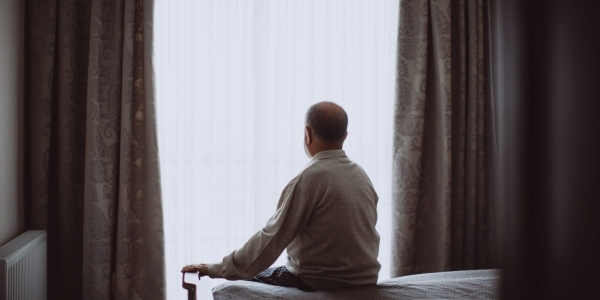
There has been a lot of talk over the past few years about public health emergencies–and rightfully so. But amid the discussions on how to respond to pandemics and poverty, another silent calamity has taken hold: loneliness.
Traditional thinking employs the ideas of compassion, empathy, and the offer of companionship to combat loneliness. These are admirable ideals, but they don’t fully address the gravity of the issue. Myriad health afflictions are steeped in loneliness. It is a pre-existing condition with dangerous consequences.
Today more than ever, we need a policy that takes the significant physical risk of loneliness into account. We must treat it as the public health issue that it is.
The idea of suffering, isolated elderly should no doubt tug at our heartstrings–but public health, like all governmental endeavors, is hemmed in by budgets. And while preventing and treating loneliness is an ethical duty, it’s also an economic decision: the healthcare costs to be saved down the line are immense when we consider the risks loneliness brings to our bodies and brains.
Research tells us that loneliness affects a third of older adults. The actual number is probably closer to 40%.
Chronic loneliness is associated with physician visits, increased risk of heart disease and dementia, and an assortment of other health risks, including a 57% increase in the risk of emergency department visits for those who suffer from it.
Loneliness is a public health issue because it causes premature death. The costs of dementia and geriatric care, which are astronomical, are immediately reduced when loneliness is considered as a key factor in the treatment and care of elderly patients. Just as preventative medicine can stave off monumental health care bills for issues such as obesity, cancer, and heart disease, preventative loneliness treatment can significantly reduce the national burden of caring for an aging population that suffers from the physical and mental side effects of prolonged isolation.
Thankfully, governments across the globe are beginning to realize the gravity. In the U.K., a minister of loneliness was appointed in 2018. Japan followed suit, employing its own loneliness minister in 2021.
In the U.S., as the pandemic raged and millions were cut off from their emotional and social support circles, U.S. Surgeon General Dr. Vivek Murthy raised loneliness as a public health issue, a move that continues to help eliminate the stigma around the issue.
Addressing these low-cost, high-impact conditions can absolutely move the needle on healthcare cost savings.
Today, the World Health Organization is considering creating a high-level commission to address social connection, isolation, and loneliness, and there’s an increased focus on social determinants of health: the economic and social conditions that influence individual and group differences in health status.
This is a positive shift, and there’s more good news. New programs like the Silver Line helpline, a British 24-hour call center for older adults craving human connection, are as radical as they are simple. In New York, the New York State Office of the Aging, a state-wide program that has previously focused on tasks like teaching seniors how to budget and eat healthy, is now turning to loneliness as a key priority, providing the ElliQ Care Companion to seniors in need (I serve on the advisory board for Intuition Robotics, the company that created ElliQ).
In both New York and Alabama, senior living homes are piloting robotic pets as potential companions for older adults. In California and Nevada, new programs are helping older adults access services, so they aren’t navigating bureaucracy alone, thus amplifying their isolation. Michigan now has a media campaign with information on reducing loneliness both in senior citizens and those with disabilities.
None of these initiatives is a silver bullet, but each shows progress. Loneliness does not exist in a vacuum, and if we care about public health, we must take its threat seriously.
The solution can be low-tech, or a marriage of high and low-tech solutions–and it never has to be complicated. We’re not likely to see billions appropriated by Congress to simply fight social isolation. However, small amounts used in innovative ways will reinforce the core programs in place that already make a difference.
The Honorable Lance Robertson is a director at Guidehouse and serves on the advisory board of Intuition Robotics. He was formerly assistant secretary for aging at the U.S. Department of Health and Human Services.
The opinions expressed in Fortune.com commentary pieces are solely the views of their authors and do not necessarily reflect the opinions and beliefs of Fortune.
More must-read commentary published by Fortune:
- Will the U.S. and Europe slide into recession in 2023? Here’s how to look out when economic outlooks don’t
- Biggest CEO successes and setbacks: 2022’s triumphs and 2023’s challenges
- 2023 will be the year of digital assassination. Are you ready for the 2-hour internet day?
- Could Kanye West be placed under Kim Kardashian’s conservatorship?





